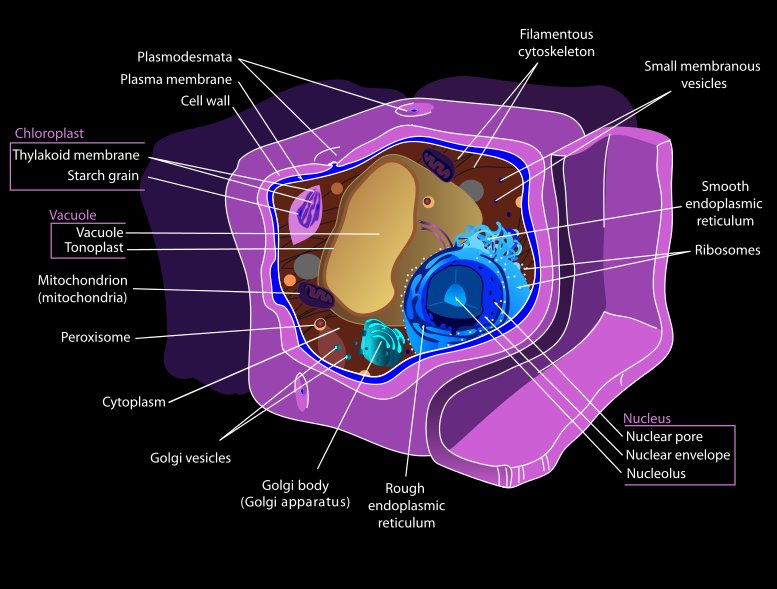

Plant cells are markedly different from the cells of the other eukaryotes. A large central vacuole that is enclosed by a membrane, the tonoplast, maintains the cell's turgor and controls movement of molecules between the cytosol and sap. A primary cell wall containing cellulose, hemicellulose and pectin, deposited by the protoplast on the outside of the cell membrane; this contrasts with the cell walls of fungi, which contain chitin, and the cell envelopes of prokaryotes, in which peptidoglycans are the main structural molecules. The plasmodesmata, linking pores in the cell wall that allow each plant cell to communicate with other adjacent cells; this is different from the functionally analogous system of gap junctions between animal cells. Plastids, especially chloroplasts that contain chlorophyll, the pigment that gives plants their green color and allows them to perform photosynthesis. Higher plants, including conifers and flowering plants (the Angiospermae) lack the flagellae and centrioles that are present in animal cells.. Also see: Endosymbiosis Eukaryote Animal Cell |